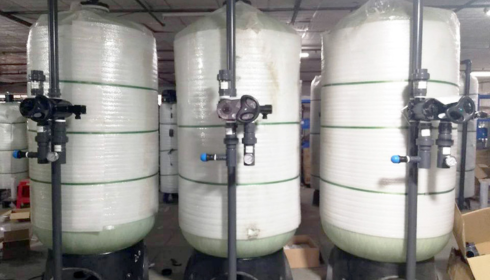Water isn’t just something we drink — it’s the quiet partner in everything we do. From brewing a morning cup of coffee to washing clothes or keeping a garden green, the quality of our water shapes daily comfort in ways we often overlook. Yet, behind that tap handle lies a complex chemistry that decides whether your water feels fresh, tastes crisp, or leaves you scrubbing limescale off your sink again. This is where water conditioning refining enters the story — not as a buzzword, but as a real, science-backed method to turn problematic water into something better for your home and your health.
Why Water Needs “Conditioning” in the First Place
Most households rely on municipal or well water that travels long distances through underground pipes before reaching your faucet. Along the way, it collects minerals like calcium and magnesium — harmless to drink but tough on plumbing. Over time, those minerals form scale, clog appliances, reduce efficiency, and leave a chalky residue on dishes. You’ve probably noticed that white film that refuses to leave your shower glass no matter how much vinegar you use.
Conditioning is all about changing the behavior of those minerals. Instead of removing them entirely, it neutralizes their ability to cling to surfaces. It’s a little like teaching stubborn minerals some manners — they still exist, but they stop misbehaving.
Refining the Process — A Bit of Modern Alchemy
Traditional softeners often swap minerals using salt, which can be effective but sometimes wasteful or undesirable for those avoiding sodium. Modern systems have evolved far beyond that. Advanced technologies now refine the water at a molecular level, adjusting structure and charge so that scaling minerals remain dissolved rather than sticking to everything they touch.
Think of it as refining water’s personality rather than rewriting its DNA. It’s still your water — just more cooperative. The best carbon conditioners take this a step further, using activated carbon media to absorb chlorine, organic chemicals, and strange odors. You can actually taste the difference. The glass of water you once ignored suddenly feels cleaner, smoother, and oddly refreshing.
How Carbon Makes Such a Difference
Activated carbon is a fascinating material — it’s porous, with a surface area so huge that a handful of it can hold thousands of impurities. When water flows through, carbon acts like a sponge, trapping chlorine and microscopic contaminants that would otherwise give water that “pool” taste or smell. It doesn’t just filter — it improves flavor, preserves appliance longevity, and supports healthier skin and hair by eliminating harsh chemicals before they ever reach you.
There’s a quiet beauty to it. You don’t notice it working, but your water, coffee, and even your plants do.
The Bigger Picture: Water Quality as a Lifestyle Choice
It’s easy to dismiss water treatment as something only large facilities or rural wells need. But when you look closer, it’s really about quality of life. Cleaner water means less maintenance, fewer plumbing issues, and longer appliance lifespans. It’s not just about what you drink — it’s about everything your water touches.
People often spend thousands on smart gadgets, but overlook the one system that affects every tap in their home. The irony is that a good conditioning setup quietly delivers those same “smart” results — saving energy, reducing waste, and making your daily routine more efficient without you even noticing.
What Professional Water Treatment Really Means
When experts talk about water treatment services, they’re referring to much more than simple filtration. A true service provider analyzes the unique chemistry of your water — its hardness, pH, contaminants, and even the age of your plumbing — before tailoring a solution. It’s not a one-size-fits-all operation.
A technician might recommend a dual-tank system that combines softening with carbon filtration, or a reverse osmosis setup for sensitive uses like drinking and cooking. Some even integrate smart monitoring so you can track water quality right from your phone. In a world obsessed with data, it’s refreshing to know exactly what’s flowing through your pipes.
The Emotional Side of Better Water
Here’s the thing most people don’t talk about: good water feels different. The first time you shower with conditioned water, your skin doesn’t feel tight afterward. Soap rinses cleaner. Towels feel softer. Even ice cubes look clearer. It’s subtle — you might not realize it until you visit somewhere with untreated water again and notice the contrast.
It’s that moment when you realize you’ve stopped buying bottled water, or that your kettle isn’t crusted with limescale anymore. Suddenly, this invisible improvement becomes something tangible, something you appreciate every day without fanfare.
The Eco-Friendly Perspective
There’s also an environmental angle worth mentioning. Conditioning and filtration systems can reduce detergent use, lower energy consumption by keeping heaters efficient, and cut down on bottled water waste. When your water behaves better, you use less of everything — from cleaning products to electricity. It’s sustainability that starts at the tap, not a distant factory.
Many modern systems are also built with recyclability and minimal chemical use in mind, making them as gentle on the planet as they are on your plumbing.
Closing Thoughts: Small Changes, Big Ripples
When it comes down to it, refined water isn’t about luxury — it’s about balance. It’s about noticing the small improvements that add up quietly over time: a brighter glass, a fresher taste, a little less scrubbing on the weekend.
The best systems don’t scream for attention. They simply let you live better without you realizing why. Like all the good things in life — sunlight through a window, or the calm of a morning cup of tea — clean water works its magic quietly in the background.
And maybe that’s what makes it so essential. It’s not about perfection. It’s about refinement — one drop at a time.

